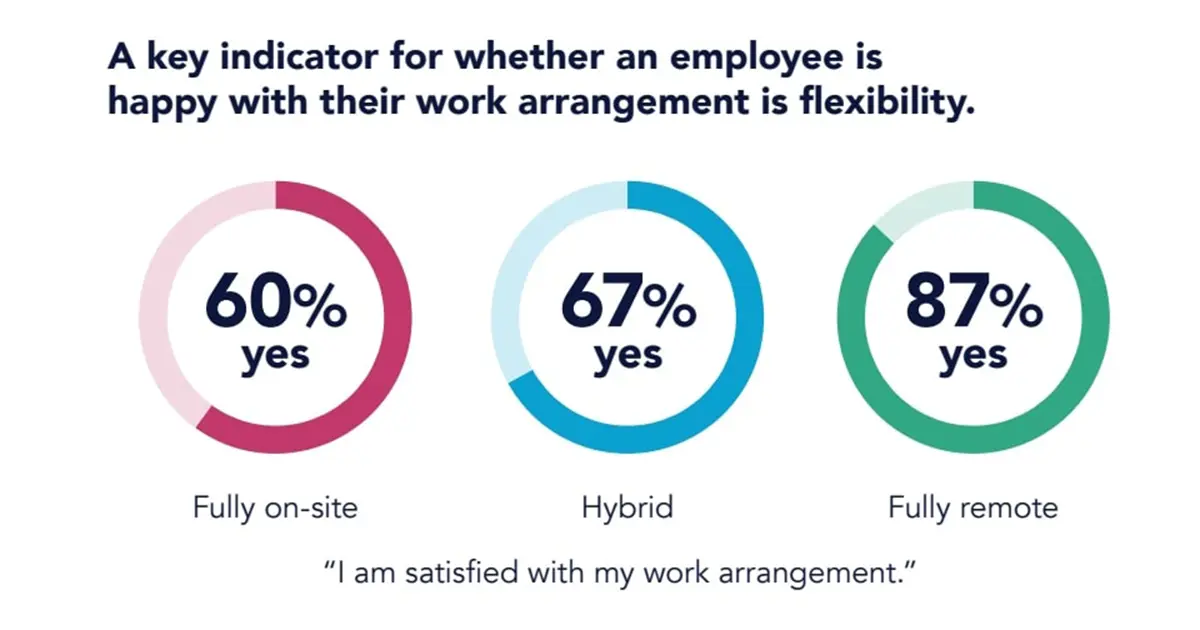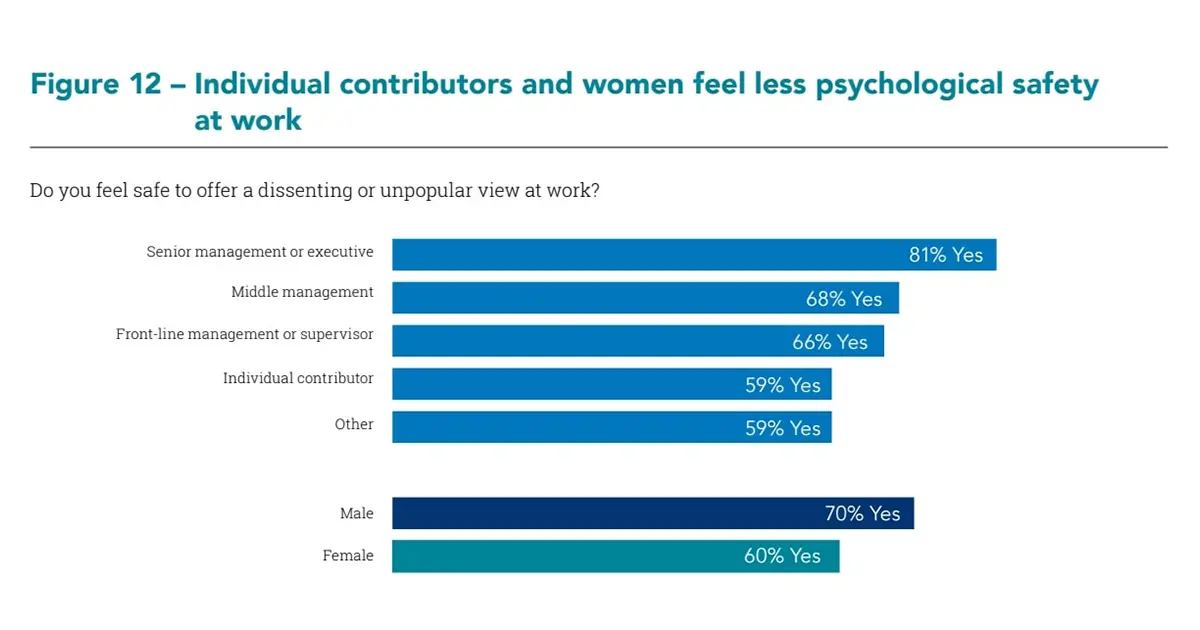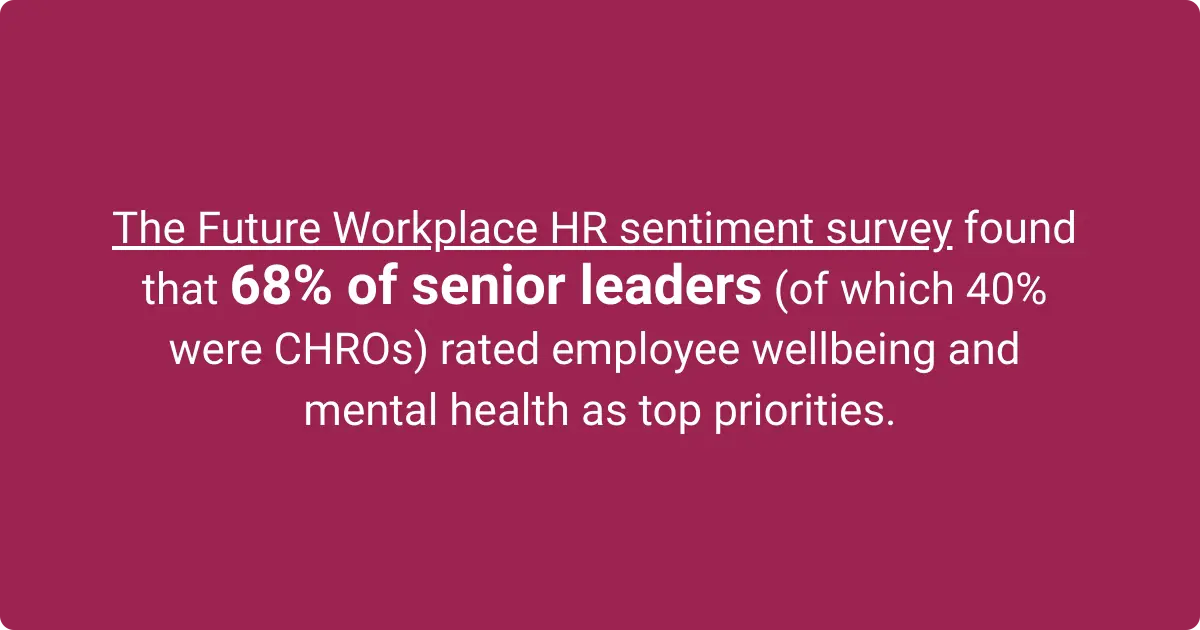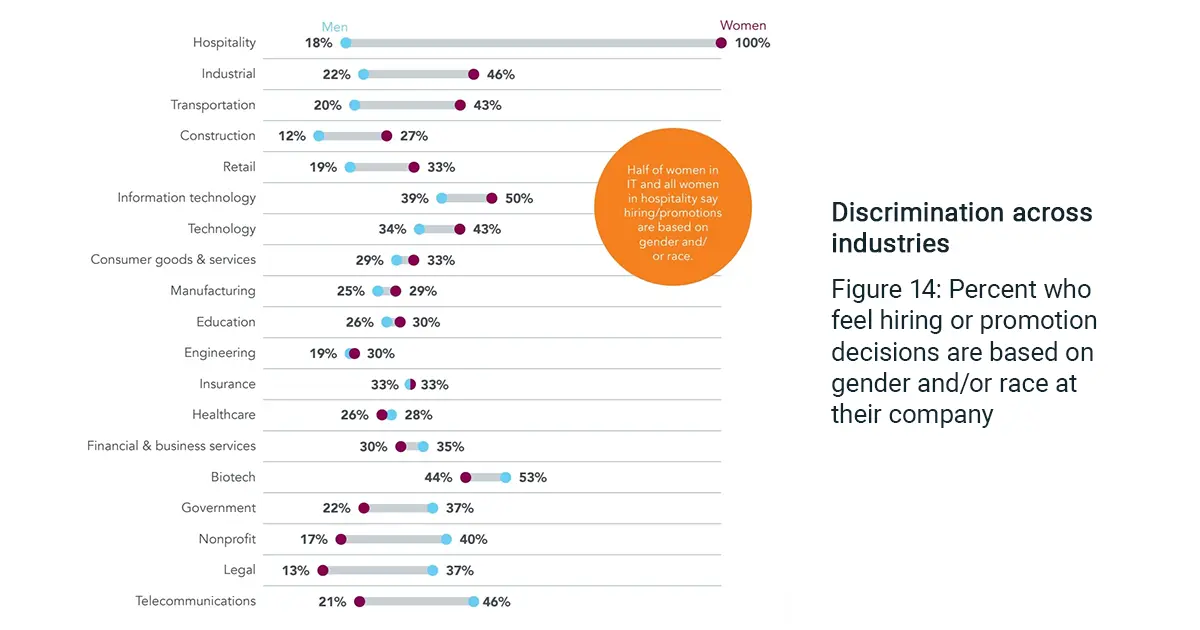Remote Work Diversity and Inclusion: How to Create an Inclusive Virtual Workspace

Remote work is changing the way we think about diversity and inclusion in the workplace.
According to our "The Evolution of Work" report, 87% of remote workers are satisfied with their work arrangement, making it the most favored working style compared to hybrid (67%) and on-site (60%) setups.
This shift underscores the importance of remote work diversity in creating more inclusive and flexible work environments.

When done right, remote work can enhance the employee experience, boosting both productivity and job satisfaction. It cuts down on commuting, reduces your organization’s carbon footprint, and expands your hiring pool, leading to more diverse teams.
However, making remote work inclusive requires a focused effort. Leaders need to prioritize empathy and open communication. Building a culture of diversity means using techniques like structured collaboration, encouraging vulnerability, and ensuring every team member feels valued.
Key Takeaways
- Remote work supports diversity and inclusion.
- Empathy and open communication are crucial.
- Flexibility and organized collaboration foster inclusive remote teams.
In this post, we'll tell you why creating an inclusive virtual workspace isn't just a nice-to-have - it's a must. Plus, learn actionable best practices to make it happen.
Understanding diversity and inclusion in remote work
Remote work isn’t just a trend; it’s a revolution. But to make this revolution inclusive, we need to get serious about diversity and inclusion. Let’s break it down: what it means, why it matters, and what’s getting in the way.
Defining diversity and inclusion
Cultural diversity in the workplace is the mix of unique characteristics - ethnicity, gender, age, cultural background - that people bring to the table. Inclusion? That’s ensuring everyone feels valued and empowered, regardless of their differences.
We can leverage tech to bring diverse perspectives together in the remote work world. With the right approach, you can build a culture where every voice is heard and collaboration thrives.
Importance for remote teams
Creating an inclusive remote work culture is vital for maximizing team potential. When remote employees feel included, they’re more engaged and productive. Companies that nail diversity and inclusion see higher job satisfaction and lower turnover rates.
Flexibility in when, where, and how people work can supercharge your approach. Embracing remote work possibilities means welcoming diverse participation, especially from underrepresented groups who might thrive in flexible work arrangements.
Are your company's DEI efforts keeping pace in uncertain times? Dive into our latest insights to discover why investing in diversity, equity, and inclusion is not just right—it's smart.
Barriers to inclusive remote work
Promoting a diverse and inclusive workforce in remote settings isn’t without its hurdles. Communication barriers, tech access issues, and unconscious biases can all lead to feelings of exclusion.
To tackle these challenges, you need more than duct tape and good intentions. Equip everyone with the right tech tools and keep those communication channels open. Training to address unconscious bias is also crucial; think of it as recalibrating your team’s internal compass to point toward fairness. This way, every team member gets a fair shot, boosting the overall effectiveness of your remote workforce.
Strategies for promoting inclusivity in remote working environments
Creating an inclusive remote workspace involves more than good intentions. It’s about clear goals, inclusive hiring and onboarding, DEI training for leaders, active employee engagement, and rewarding inclusive behaviors. These strategies are your blueprint for a diverse and cohesive remote team.
1. Establish clear diversity goals in hiring
Set diversity goals like your company’s life depends on it. You need specific, measurable targets like gender, race, and age balance - your DEI trifecta. And don’t just eyeball it; use data analytics to keep tabs on how you’re doing. This isn’t about pretty pie charts; it’s about making real progress.
Team up with HR to scrub your job descriptions of bias. Your goals are like setting the GPS on a road trip - no detours, just a clear route to a diverse workforce.
2. Inclusive hiring and onboarding
Hiring and onboarding need to be as inclusive as your favorite all-you-can-eat buffet. Start with diverse interview panels to keep biases at bay. Stick to questions that matter - no fluff. And make sure your hiring platforms are user-friendly for everyone, including those with disabilities.
For onboarding, roll out the welcome mat with remote-friendly materials and mentors from different backgrounds. This way, every newbie feels like they’ve joined the team from day one. A well-structured onboarding process is your secret sauce for a team that clicks and sticks.
3. Leadership DEI training and development
Get your leaders in the DEI game with engaging training programs. Use resources like Harvard ManageMentor Opens in a new tab and online courses to keep learning curves steep and continuous.
When educating leadership, focus on the big three: unconscious bias, inclusive communication, and empathetic leadership.
Regular workshops and interactive sessions will help cement these concepts. Prioritize DEI training, and watch your leaders transform into diversity champions, ready to manage remote employees and diverse teams and promote inclusivity.
4. Employee engagement and communication
Make remote employees on your team feel like they’re part of something bigger than just a Zoom call. Regular and inclusive communication practices are your secret weapon. Use digital tools, like Conversations from Workhuman, to bridge those physical gaps and keep everyone in the loop. Platforms like virtual town halls, regular check-ins, and team-building activities can keep engagement levels high.
Did you know that 65% of HR executives are seeking better quality manager-employee check-ins for feedback and coaching?
Workhuman's Conversations® solution is the tool you need. Enhance your interactions for more meaningful and effective employee engagement. Click here to discover how Workhuman can transform your feedback process.
Encourage open and transparent communication channels. According to our "Social Impact in the Human Workplace" report, only 60% of women in senior management or executive positions feel safe offering a dissenting view at work. That’s a statistic begging for change.

Make it safe for employees to express concerns or share ideas. Multiple feedback channels allow you to address issues in real-time, showing your commitment to inclusive communication. It’s like having a direct line to everyone’s thoughts and ideas.
5. Recognize and reward inclusive behaviors from remote team members
Shout out to those employees who are making your remote work environment more inclusive. Implement a recognition program like Social Recognition that highlights and celebrates actions promoting diversity and inclusion. Public acknowledgment and tangible rewards can light a fire for others to follow suit.
Workhuman is the #1 provider of employee recognition software. When you opt for recognition done right from Workhuman, you don't have to settle for second-rate recognition.
Encourage peer-to-peer recognition to build a culture of appreciation. By valuing and rewarding inclusive behaviors, you turn diversity and inclusion from buzzwords into everyday practice. This approach helps weave these values into the very fabric of your organization's remote work culture.
Addressing challenges and supporting diversity
Promoting diversity and inclusion in remote work settings isn't a walk in the park - it requires clear strategies to support women, minorities, and people with disabilities, all while ensuring mental health and wellbeing.
Supporting women and minorities
Supporting women and minorities in a remote work environment is all about creating an inclusive culture. Think of flexible work schedules as your magic wand, accommodating the different needs of women who often juggle multiple roles. Implement mentorship programs because everyone can use a fairy godparent to help navigate professional challenges.
Regular check-ins and open communication channels are your trusty sidekicks to combat workplace bias. And to bridge the digital divide and ensure everyone has equal access to technology and training. The beauty of remote work? It opens doors to diverse talent pools across regions, boosting representation.
Accommodating people with disabilities
To support disabled remote workers, accessibility is your North Star. Ensure all digital tools and platforms are up to snuff with accessibility standards - think screen readers, voice recognition software, and other essential remote work accommodations. Personalized adjustments, like ergonomic furniture or specialized equipment, can turn comfort into productivity.
Training managers on disability etiquette and awareness can create a more inclusive environment. A clear process for requesting accommodations ensures employees feel supported.
Regular feedback sessions help identify ongoing needs and areas for improvement. Remote work can be a game-changer for employees with disabilities, offering a more accessible work experience.
Mental health and wellbeing
Mental health and wellbeing are the unsung heroes of remote work. Employers should offer mental health resources, like counseling services and mental health programs. Encourage team members to take regular breaks and promote a healthy work-life balance to keep burnout at bay. Mental health first aid training for managers equips them to recognize stress signs and provide initial support.

Creating virtual social events helps maintain a sense of community and reduces feelings of isolation. Open communication about mental health reduces stigma and encourages employees to seek help when needed.
Policies that prioritize mental health, such as mental health days, show a company’s commitment to the wellbeing of its employees. This is especially important during crises like COVID-19, which can exacerbate mental health challenges.
The role of technology and hybrid work models
Technology is the secret sauce that enhances diversity and inclusion within hybrid work models. It fosters better communication, collaboration, and flexibility. By using the right tools and strategies, you can whip up an inclusive environment that boosts productivity and trust among your team.
Leveraging tech for inclusion
Think of technology as your trusty sidekick in building an inclusive work environment. Video conferencing platforms like Zoom and Slack are the multi-tools of communication, ensuring everyone stays connected.
Enterprise solutions like Workhuman's platform can also sprinkle some magic dust, promoting recognition and feedback across the organization. These tools bridge geographical and cultural gaps, making sure every voice gets its moment in the spotlight. Analytics tools can help you identify where your inclusivity game needs some extra love.
Creating accessible digital workspaces is a must. Features like real-time captioning and screen readers ensure your tech setup is as inclusive as a family dinner. With these features, all team members can join the feast, regardless of where they are.
Hybrid work: balancing flexibility and inclusion
Hybrid work models perfectly blend in-person and remote work, offering flexible schedules that boost work-life balance. This setup is a lifesaver for employees juggling caregiving responsibilities or living in different time zones.
However, ensuring inclusion within hybrid work models means tackling potential disparities head-on. Remote employees might feel left out of those water cooler chats. Regular virtual meetings can help bridge this gap, keeping remote workers in the loop.
Clear policies and standardized procedures are your best friends here. They prevent any bias in work distribution and evaluation. Consistency and transparency build trust, fostering a sense of belonging among all employees.
Embracing hybrid work models can supercharge productivity by letting people work in environments where they thrive. The combo of technology and intelligent management practices creates an inclusive, flexible work culture that’s a win-win for everyone.
Measuring the impact of diversity and inclusion initiatives
Want to know if your diversity, equity, and inclusion initiatives are hitting the mark? You’ll need both qualitative and quantitative measures. Surveys and feedback loops are your go-to tools for gauging employee sentiments while tracking performance and engagement, which provide concrete metrics.
Surveys and feedback loops
Surveys are like the Swiss Army knife of DEI measurement. Regular surveys can reveal how included employees feel, their experiences with microaggressions, and any unconscious bias. And don’t forget: anonymous surveys are the way to go for honest responses.
Feedback loops, like focus groups and one-on-one sessions, allow you to dig deeper into specific issues. Managers can use this real-time input to make quick adjustments. Combining survey data with in-depth feedback gives you a 360-degree view of the workplace environment.
A well-structured survey should include questions about feelings of belonging, corporate culture, and experiences with bias. Conduct these surveys periodically to track trends over time. The aim? To create a sustained effort that keeps improving your DEI strategies.
Tracking performance and engagement
Think of employee performance and engagement as the pulse check for your DEI initiatives. Track metrics like diversity, equity, and inclusion training participation, promotion rates among diverse groups, and overall employee retention.
Monitoring these metrics helps you see if your DEI efforts are making a positive impact. Higher engagement levels and improved performance metrics are often signs of a more inclusive environment. However, consider this: in the hospitality industry, 100% of women feel that hiring or promotion decisions are based on gender and/or race. Clearly, there's work to be done.
The future of work is human! Set the path for a brighter future of work with a human-centric approach. Learn about the findings from the Workhuma® analytics & research institute survey. Click the link to download the report now!

Managers should regularly dive into this data to spot patterns and areas needing improvement. Setting clear, measurable goals for DEI and tracking progress against these goals can help keep your focus sharp and ensure your DEI efforts are consistent and effective.
Employee engagement can also be measured through participation in DEI-related events and programs, showing your overall commitment to fostering an inclusive culture.
Conclusion
Creating an inclusive remote workspace is a multifaceted endeavor that requires clear goals, inclusive hiring practices, continuous DEI training, and active engagement. By leveraging technology and adopting flexible hybrid work models, you can foster an environment where every team member feels valued.
Regularly measuring the impact of your DEI initiatives ensures sustained progress. Remember, an inclusive culture not only enhances productivity and satisfaction but also builds a stronger, more diverse team. Let’s make remote work a place where everyone can thrive.